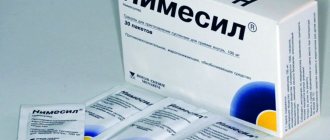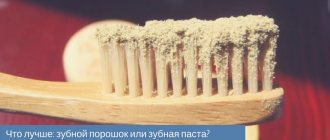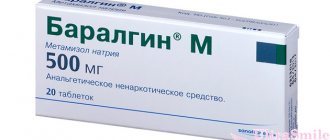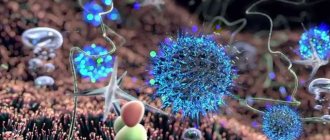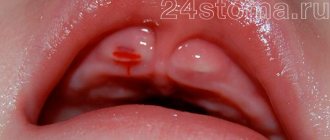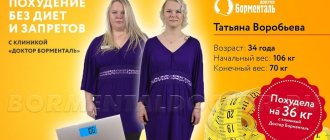A high-quality and rapid wound healing process after tooth extraction depends not only on the professionalism of the doctor who performed the extraction (removal) of the tooth, but on the correct behavior of the patient after the procedure, who must strictly follow the recommendations given by the doctor for the period of healing of the wound surface. If you correctly and clearly follow the advice of a specialist, the recovery process occurs quickly and as painlessly as possible.
For example, patients who do not listen to the recommendations given to them make rinsing movements in the area of the healing wound; this washes out the blood clot, which performs a protective function against the entry of bacteria and microbes, as a result of which there is a high risk of wound suppuration.
In this article we want to give recommendations on what should and can be done after tooth extraction, and what should not be done.
1. A gauze swab on the hole. When can it be taken out?
As a rule, the doctor does not immediately release the patient after removal, but asks him to wait for 15-20 minutes within the clinic to then examine and make sure that everything is in order with blood clotting and the tampon can be removed without fear. In rare cases, keeping the tampon in your mouth may take 30-40 minutes, usually 10-20 minutes. There is no need to keep it longer and it is even dangerous, because bacteria accumulate on it and there is a possibility of infection. There are exceptions, when the wound continues to bleed a little, then the old tampon is replaced with a new sterile one and kept for some time.
For some time, saliva may still be pinkish due to staining with secreted ichor, this should not be alarming, this situation can be distinguished from bleeding. At this moment, saliva can be easily swallowed; there is no need to accumulate it in the mouth.
Possible side effects
Like any synthetic pharmacological agent, Nimesil can provoke side effects. The nature of the undesirable reaction and its intensity are determined by the individual characteristics of the body and the presence of pathological changes in the functioning of various organ systems.
Taking Nimesil can lead to the following undesirable symptoms:
- changes in clinical blood parameters (anemia);
- psycho-emotional changes – irritability, anxiety, episodes of nightmares;
- lability of blood pressure or its persistent increase;
- increased heart rate;
- disturbances in the gastrointestinal tract - nausea, vomiting, increased gas formation, constipation or diarrhea;
- dysfunction of the urinary system (urinary retention);
- reduction in visual acuity;
- development of general weakness, drowsiness;
- allergic rashes.
If there are any changes in your health while taking Nimesil, you should stop using the medication and consult a therapist as soon as possible.
2. After what time can you eat and drink?
After removal, you can drink water. After two hours you can eat. The limiting condition is not to chew rough food on the side of the extracted tooth in the first few days. Hard food can damage the blood clot, which is located in the socket and is needed for wound healing. If the patient experiences an acute feeling of hunger, then no one forbids eating cool yogurt or kefir. In the first days of healing of the hole, it is better to completely avoid eating rough, hard, solid foods, so as not to make strong chewing movements, as well as spicy, salty foods, so as not to irritate the oral mucosa. It is also important to monitor the temperature of food and drinks; they should not be too hot.
Analogues of the product
There are dozens of types of drugs on the pharmaceutical market that are structural analogues of Nimesil. The similarity of the therapeutic effect and possible side effects on the body of these drugs is due to a single active component - nimesulide. According to reviews from many people, the result of using these drugs is no different from taking Nimesil. Moreover, many analogues are much cheaper than this analgesic.
Examples of medicines that can be used as a substitute for Nimesil:
- Coxtral tablets;
- Aponil tablets;
- Nimegesic tablets and suspension;
- granulate for preparing Mesulide suspension;
- Novolid tablets;
- Nimulid tablets;
- Prolid tablets;
- Ameolin tablets.
This is a partial list of pharmaceuticals. Every pharmacy has several types of structural analogues of Nimesil. Full information about available substitutes for this analgesic can be obtained from your pharmacist.
You cannot independently choose a drug to relieve pain after tooth extraction. Only a dentist can select an analgesic that will have the maximum therapeutic effect and will not cause harm to the body. In some cases (low pain threshold, strong inflammatory reaction), the doctor may prescribe the use of painkillers that contain another active substance, for example, Ketanov.
Category: Tooth extraction Published by Mister stomatolog
3.Applying ice.
After tooth extraction in our Center, a specialist will give you ice specially prepared for such procedures to apply in the first hours after extraction. Ice is applied for a certain time, at certain intervals, which the doctor will instruct you about. At home, this procedure will need to be continued for some time (the first few hours after removal). This is done in order to minimize or completely eliminate tissue swelling.
Under no circumstances should you heat the area in the area of the extracted tooth; in this case, suppuration will develop.
Painkillers Powder Nimesil Laboratories Menarini S.A. - review
This will probably be my shortest review????
I decided to get rid of my wisdom teeth. They started to shift all the teeth (10 years ago, but I, like a true Estonian, pulled as hard as I could????).
A week after removal
I read dozens of reviews about how THIS happens. Complete horrors and fears. Most reported terrible pain for at least a week after tooth extraction.
In the morning at the appointment, the surgeon “reassured”: “Come back after lunch, you have a difficult case, there’s work for two or three hours.”
I wrote out a prescription for antibiotics. At the pharmacy I immediately bought antibiotics, prebiotics, and painkillers. Well, I definitely did. The doctor said it was impossible because I was breastfeeding, but I’m impressionable, so I decided to play it safe and buy strong painkillers.
Assortment of medications after tooth extraction. There is also not enough cream for skin irritation under a child’s diaper caused by one of the drugs
I bought three expensive and three cheap Nimesil.
I took it individually. Imported, from Berlin Hemi, they only give 3 pieces. I don’t know how much is in the box, I initially only wanted 3 bags.
Nimesil after wisdom tooth removal
Nimesil for toothache
- And this is the Russian nimesil:
Cheap nimesil
They don't give instructions; they remain in the box at the pharmacy. I read the instructions on the Internet.
Price 27 rubles for 1 sachet.
Price for nimesil
All in all.
They pulled out one of my wisdom teeth at 3 pm. They stitched up the wound and released him in peace???? the surgeon warned that the anesthesia would last for 4 hours.
6 hours passed and there was still no pain. The tongue, lips, everything remained “frozen”.
I put the children to bed.
And so, just enchantingly quickly, instantly, in a couple of minutes, the anesthesia wore off. I started to become afraid of the pain.
Really shivered and shook, precisely from the pain.
She quickly stirred the contents of the bag and drank.
Damn. How painful. I frantically began to search for information about when it would begin to let go.
Me - about 7 minutes later. The pain began to dull slightly. The chills stopped.
After 20 minutes the pain was rated 2 out of 10.
???????????? In general, with acute pain after wisdom tooth removal, Nimesil helped me within 20 minutes . I fell asleep peacefully. In the morning the pain was not so severe, it was saved by keterol and ibuprofen, they are allowed during breastfeeding.
By the way, about this. I showed selfishness by drinking this drug. On the eve of the removal, I spoke with a guardianship consultant, who strictly did not recommend Nimesil. But I thought that enduring such pain was unbearable. But Nurofen and similar drugs are much weaker.
The price of my selfishness is irritation on the child’s bottom. Maybe from anesthesia, maybe from a.b., maybe in combination. But it was nimesil that the consultant asked not to use.
Conclusion: it relieves pain quickly and powerfully, but when breastfeeding it is better to do without it!
6. Medications after removal.
After the procedure, the doctor prescribes a number of medications to take. Under no circumstances should you take any medications on your own, without consulting a doctor.
Painkillers should be taken in case of pain, at intervals and in the amount recommended by the doctor. Each case is individual; it happens that the patient does without taking painkillers.
Antibiotics. In some cases, after removal, antibiotics are prescribed for 5-7 days. As a rule, these are situations when the doctor removes a tooth in the stage of inflammation, complex extraction or removal of several units of teeth. Only a specialist surgeon decides whether to take antibiotics or not.
Antihistamines. Reduces the likelihood of swelling.
Antiseptics. Used as a rinse. BUT, remembering that rinsing movements are prohibited in the first days. A small amount of solution is taken into the mouth and simply held in the mouth, then calmly spit out. Such baths must be done if the tooth was removed during the inflammation phase, if the flux was exposed, if there are teeth affected by caries in the oral cavity.
Enlargement of wisdom teeth
The growth of wisdom teeth is associated with various pathological processes and pain. Nimesil is used to block them. The product has a preventive effect, reducing the risk of attachment of viral flora. The dose is prescribed by a medical specialist in accordance with the clinical picture.
Symptoms of gingivitis are inflammation of the gums. In this case, you can note blood circulation, pain, swelling and overflow of blood vessels. The effective action of Nimesil makes it possible to use it to eliminate the clinical picture.
7.High blood pressure.
In patients with high blood pressure, there is a risk that the wound may bleed longer than usual. In this case, you need to regulate the pressure by taking appropriate medications to reduce it. In our SDent dental medical center, even before the start of manipulations, the doctor always finds out the main points about the general health of the patient. If the patient has hypertension, the specialist knows about this problem in advance and then gives the necessary recommendations appropriate to the case.
Nimesil for colds
Indications for using the drug for colds are:
- increase in body temperature is 37.5 degrees,
- increased sweating,
- pain in muscles and joints,
- nasal congestion,
- hyperemia of the mucous membrane of the throat,
- coughing,
- discomfort in the throat,
- fast fatiguability,
- dizziness.
The antipyretic effect makes it possible to prescribe the drug at fever. The effect itself occurs half an hour after administration and lasts for three to six hours. The dose of the medication is selected individually in accordance with the characteristics of the pathology.
8.What happens to the sutures after removal.
After the tooth is removed, the surgeon places sutures on the wound surface. This promotes faster healing, reduced pain, less risk of inflammation, minimizes the risk of bleeding, and protects the blood clot from falling out.
At the SDent clinic we use the most modern and safe materials. The thread with which the surgeon sews the edges of the hole is self-absorbing. But during the process, the ends of the thread can cause discomfort to the patient and interfere with the oral cavity. Therefore, for the comfort and safety of the patient, the doctor always sets an appointment date for examination and removal of sutures in approximately 10 days.
Indications for taking Nimesil
The action of the product is interconnected with its ability to reduce the sensitivity of pain, reduce fever and eliminate inflammatory processes. The main indications for use of the product include:
- pain in the back,
- joint pain,
- toothache,
- muscle pain of varying severity,
- inflammatory processes in the tendons,
- acute or chronic inflammation of the synovial bursa,
- menstrual irregularities,
- pain during menstruation,
- severe headache.
After tooth extraction, you should not do the following.
- In the first couple of days, taking a hot bath is excluded, only a warm shower.
- During sleep, you need to be careful not to lie on the side where the tooth was removed, this provokes the appearance of swelling.
- Visiting the gym and active physical activity should be postponed in the first days.
- Do not touch the wound with your tongue or foreign object.
- Do not open your mouth very wide, do not use active chewing and facial movements to avoid the sutures coming apart.
- Aspirin is not suitable as an anesthetic due to the fact that it has a thinning effect on the blood and may cause bleeding and hematoma.
- Do not rinse during the first few days. This can negatively affect the loss of a blood clot from the socket and the occurrence of inflammation.
For more information and to make an appointment with a specialist, call:
+7,
Nimesil granules for suspension 100 mg sachet 2 g 9 pcs ➤ instructions for use
Undesirable side effects can be minimized by using the minimum effective dose of the drug for the shortest possible short course.
Nimesil® should be used with caution in patients with a history of gastrointestinal diseases (ulcerative colitis, Crohn's disease), since exacerbation of these diseases is possible.
The risk of gastrointestinal bleeding, ulceration or perforation of an ulcer increases with increasing doses of NSAIDs in patients with a history of ulcers, especially those complicated by bleeding or perforation, and in elderly patients, so treatment should be started at the lowest possible dose. Patients receiving drugs that reduce blood clotting or suppress platelet aggregation also increase the risk of gastrointestinal bleeding. If gastrointestinal bleeding or ulcers occur in patients taking Nimesil®, treatment with the drug should be discontinued.
Since Nimesil® is partially excreted by the kidneys, its dosage for patients with impaired renal function should be reduced depending on the level of urination.
There is evidence of rare cases of liver reactions. If signs of liver damage appear (itching, yellowing of the skin, nausea, vomiting, abdominal pain, dark urine, increased activity of liver transaminases), you should stop taking the drug and consult your doctor.
Despite the rarity of visual impairment in patients taking nimesulide concomitantly with other NSAIDs, treatment should be stopped immediately. If any visual disturbance occurs, the patient should be examined by an ophthalmologist.
The drug can cause fluid retention in tissues, so patients with high blood pressure and cardiac dysfunction should use Nimesil® with extreme caution.
In patients with renal or heart failure, Nimesil® should be used with caution, as renal function may deteriorate. If the condition worsens, treatment with Nimesil® should be discontinued.
Clinical studies and epidemiological data suggest that NSAIDs, especially at high doses and with long-term use, may lead to a small risk of myocardial infarction or stroke. There is insufficient data to exclude the risk of such events when using nimesulide.
The drug contains sucrose, this should be taken into account by patients suffering from diabetes mellitus (0.15–0.18 XE per 100 mg of the drug) and those on a low-calorie diet. Nimesil® is not recommended for use in patients with fructose intolerance, glucose-galactose malabsorption or sucrose-isomaltose deficiency.
If signs of a cold or acute respiratory viral infection occur during treatment with Nimesil®, the drug should be discontinued.
Nimesil® should not be used simultaneously with other NSAIDs.
Nimesulide can change the properties of platelets, so caution must be exercised when using the drug in people with hemorrhagic diathesis, however, the drug does not replace the preventive effect of acetylsalicylic acid in cardiovascular diseases.
Elderly patients are particularly susceptible to adverse reactions to NSAIDs, incl. the risk of gastrointestinal bleeding and perforations that threaten the patient’s life, deterioration of kidney, liver and heart function. When taking Nimesil® for this category of patients, proper clinical monitoring is necessary.
There is evidence of the occurrence in rare cases of skin reactions (such as exfoliative dermatitis, Stevens-Johnson syndrome, toxic epidermal necrolysis) to nimesulide as well as to other NSAIDs. At the first signs of a skin rash, damage to the mucous membranes or other signs of an allergic reaction, Nimesil® should be stopped.
The effect of the drug on the ability to drive vehicles and operate machinery. The effect of the drug Nimesil® on the ability to drive vehicles and operate machinery has not been studied, therefore, during treatment with the drug Nimesil®, care should be taken when driving vehicles and engaging in potentially hazardous activities that require increased concentration and speed of psychomotor reactions.

